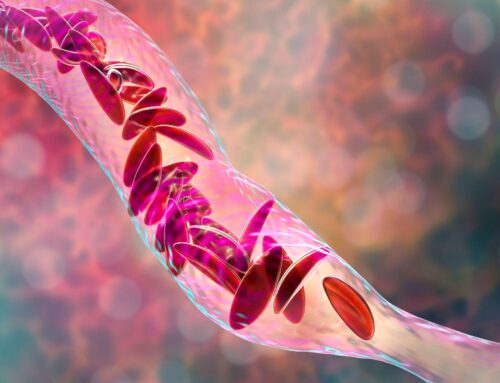Looking for something?
Fanzor: A Programmable RNA-Guided System In Eukaryotes Similar to CRISPR

Researchers have uncovered the first programmable RNA-guided system in eukaryotes that could be even more precise than CRISPR gene-editing. The discovery — led by Feng Zhang at the McGovern Institute for Brain Research at MIT and the Broad Institute of MIT and Harvard — demonstrates that DNA-modifying proteins exist across all kingdoms of life (1).
In a recently published study in the scientific journal Nature, the team explains how the system is based on a protein called Fanzor, which uses RNA as a guide to precisely target DNA and which can be reprogrammed to edit the genome of human cells. This system, similar to the gene-editing technology CRISPR, was previously only known to exist in simple prokaryotic organisms like bacteria and archaea (1).
Eukaryotic cells have a membrane-bound nucleus and include organisms like fungi, plants, and animals. Prokaryotic cells, in which CRISPR was first discovered, are single-celled and lack a nucleus.
“People have been saying with such certainty for so long that eukaryotes couldn’t have a similar system,” said Ethan Bier, a geneticist at the University of California San Diego. However, the study shows that RNA-guided DNA-cutting mechanisms exist in both cell types, unlocking the potential for exploring new gene-editing technologies.
Fanzor: a distant cousin of CRISPR
After Zhang and his colleagues published their first paper on CRISPR in 2013, Zhang said they began studying how these systems evolve and asking if there were other RNA-programmable systems present in nature. Although discovered and named by other researchers a decade ago, Fanzor’s remained overlooked until two years ago, when Zhang and his team identified a class of proteins in prokaryotes called OMEGAs (Obligate Mobile Element-guided Activity), thought to be an early ancestor of the Cas9 protein — the programmable DNA “scissors” used in the CRISPR system.
Through molecular genealogy studies, they found that one of the OMEGA proteins, called TnpB, likely gave rise to CRISPR-Cas systems in microbes and is possibly the ancestor of the eukaryotic Fanzor as well. This finding suggests that Fanzor is related to CRISPR, and like its distant cousin, it also has gene-editing capabilities.
The team also underscored similarities between prokaryotic OMEGA systems and Fanzor proteins in eukaryotes and suggested that the Fanzor enzymes might also use an RNA-guided mechanism to target and cut DNA.
In their recently published study, the team isolated Fanzors from fungi, algae, amoeba species, and a clam known as the northern quahog (1). The biochemical characterization of the Fanzor proteins revealed they are DNA-cutting endonuclease enzymes that use nearby non-coding RNAs known as ωRNAs (omegaRNA) to target particular sites in the genome (1).
The thinking is that, unlike CRISPR proteins, Fanzor proteins are encoded in the eukaryotic genome with transposable elements or “jumping genes,” bits of DNA that can move around the genome and replicate themselves. The team’s phylogenetic analysis suggests that the Fanzor genes have shuffled from bacteria to eukaryotes through horizontal gene transfer, a process where genetic information is shared between organisms.
“These OMEGA systems are more ancestral to CRISPR, and they are among the most abundant proteins on the planet, so it makes sense that they have been able to hop back and forth between prokaryotes and eukaryotes,” said Makoto Saito, co-author and postdoctoral fellow at the Zhang lab.
Fanzor’s future potential as an attractive gene therapy
The presence of DNA-modifying proteins in eukaryotes is an exciting discovery, but how does it compare to the very adaptable and proven Cas9 protein? To investigate Fanzor’s potential as a genome editing tool, the team showed it could generate insertions and deletions at targeted genome sites within human cells.
Compared to CRISPR-Cas systems, which range from about 1,000 to 1,600 amino acids, Fanzor systems are more compact, ranging from 400 to 700 amino acids, and could potentially be more easily delivered to cells and tissues, Zhang explained (1). Additionally, a unique aspect found with one of the Fanzor proteins was that it did not demonstrate “collateral activity,” where an RNA-guided enzyme cleaves its DNA target, and they’re less likely to accidentally degrade nearby RNA or DNA compared to CRISPR-Cas (1). This means it could potentially allow for more targeted editing than some of the Cas enzymes.
Both Fanzor and CRISPR interact with guide RNA, a molecule that leads the proteins to the DNA intended to be cut. The ωRNA complements the strand of target DNA, and when they match up, the two pieces zip together, and Fanzor can then cut the DNA.
Like CRISPR systems, the Fanzor system can be easily reprogrammed to target specific genomic sites. Zhang believes it has the potential to become a powerful new genome editing technology for research and therapeutic uses.
To test the capabilities of the Fanzor system in the genome of human cells, the researchers tested four Fanzors and found all except that of the algae were able to edit human embryonic kidney cells grown in culture dishes (1). Although the initial testing found the Fanzor system was less efficient at adding and removing bits of DNA than CRISPR systems, its 11.8% efficiency is comparable to early versions of CRISPR gene editing. Additionally, after enhancing and stabilizing the system, the efficiency increased to over 18% (1).
Bier explains this inefficiency isn’t a signal that Fanzor isn’t as good as CRISPR, which also required engineering to succeed in making the substitutions every time. CRISPR systems can now edit human cells with more than 90% efficiency, but this is after more than a decade of work and engineering to improve the system.
“We still need to engineer the enzyme further so that it will match the efficacy of the Cas9 gold standard,” Zhang said.
The study states that reported engineering strategies for Cas12, such as systematic mutagenesis to introduce glycines and guide RNA engineering, combined with in-depth screening of more Fanzors, could further improve their genome editing performance (1).
“This work really underscores the power of studying biodiversity,” Zhang said.
Other labs studying the Fanzor protein
Zhang and his team weren’t the only researchers exploring the capabilities of Fanzor. Two weeks before Zhang’s publication, Omar Abudayyeh and Jonathan Gootenberg, who share a lab at the McGovern Institute, posted their own study about Fanzors and their gene editing ability on the preprint server bioRxiv.
Abudayyeh and Gootenberg analyzed the genomes of roughly 22,500 eukaryotes and their viruses and found up to 3,600 RNA-guided DNA-cutting enzymes commonly associated with transposons. The team classified the different types of Fanzor proteins in eukaryotes, which they renamed HERMES, for Horizontally Transferred Eukaryotic RNA-guided Mobile Element Systems. Their study also demonstrated that the proteins could be used for gene editing but at a lower efficiency than in Zhang’s study.
“It’s remarkable that we are able to find the spread of what we thought were bacterial and archaeal systems to eukaryotes and for these systems to have remarkably spread through all branches of eukaryotic life,” said Abudayyeh. Gootenberg added that although these enzymes appear in animals, they have yet to be found in humans.
The future of Fanzor
The use of Fanzor as a gene-editing technology could bring forward innovations in the treatment of diseases. CRISPR, which has been present for over a decade, has been used in research and experimental medical treatments for conditions like blindness and cancer. Whether it complements the current technology or is used for other treatments, the discovery of gene-editing systems in eukaryotes reveals a previously hidden piece of nature’s vast biodiversity.
“Nature is amazing. There’s so much diversity,” said Zhang. “There are probably more RNA-programmable systems out there, and we’re continuing to explore and will hopefully discover more.”
References
- Saito M, Xu P, Faure G, Maguire S, Kannan S, Altae-Tran H, Vo S, Desimone A, Macrae RK, Zhang F. Fanzor is a eukaryotic programmable RNA-guided endonuclease. Nature. 2023 Aug;620(7974):660-668. doi: 10.1038/s41586-023-06356-2. Epub 2023 Jun 28. PMID: 37380027.
“The views, opinions, findings, and conclusions or recommendations expressed in these articles and highlights are strictly those of the author(s) and do not necessarily reflect the views of the Oligonucleotide Therapeutics Society (OTS). OTS takes no responsibility for any errors or omissions in, or for the correctness of, the information contained in these articles. The content of these articles is for the sole purpose of being informative. The content is not and should not be used or relied upon as medical, legal, financial, or other advice. Nothing contained on OTS websites or published articles/highlights is intended by OTS or its employees, affiliates, or information providers to be instructional for medical diagnosis or treatment. It should not be used in place of a visit, call, consultation, or the advice of your physician or other qualified health care provider. Always seek the advice of your physician or qualified health care provider promptly if you have any healthcare-related questions. You should never disregard medical advice or delay in seeking it because of something you have read on OTS or an affiliated site.”








